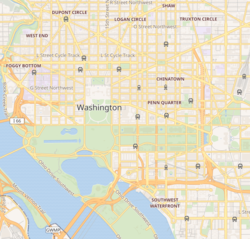
William Cranch was a United States circuit judge and chief judge of the United States Circuit Court of the District of Columbia. A staunch Federalist and nephew of President John Adams, Cranch moved his legal practice from Massachusetts to the new national capital, where he became one of three city land commissioners for Washington, D.C., and during his judicial service also was the 2nd Reporter of Decisions of the Supreme Court of the United States and a Professor of law at Columbian College.
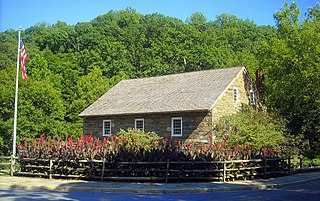
This is a list of properties and districts in Washington, D.C., on the National Register of Historic Places. There are more than 600 listings, including 74 National Historic Landmarks of the United States and another 13 places otherwise designated as historic sites of national importance by Congress or the President.
Cranch is a surname. Notable people with the surname include:
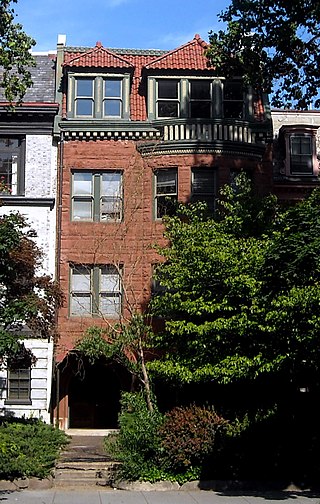
The Robert Simpson Woodward House is a former residence located at 1513 16th Street, NW in the Dupont Circle neighborhood of Washington, D.C. From 1904 until 1914, it was a home of geologist Robert Simpson Woodward (1849–1924), the first president of the Carnegie Institution and a highly regarded scientist and science administrator. The building currently serves as the Capital Research Center headquarters. It was declared a National Historic Landmark in 1976 and designated a contributing property to the Sixteenth Street Historic District in 1978.

The Charles Sumner School, established in 1872, was one of the earliest schools for African Americans in Washington, D.C. Named for the prominent abolitionist and United States Senator Charles Sumner, the school became the first teachers' college for black citizens in the city and the headquarters of its segregated school system for African American students. It currently houses a small museum, a research room, art exhibits, and the archives of the District of Columbia Public Schools.

Friendship House is a Georgian townhouse, located at 619 D Street,, Southeast, Washington, D.C., in the Capitol Hill neighborhood.
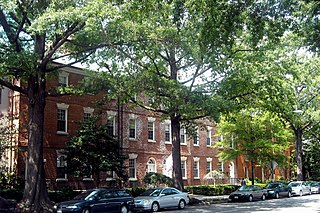
Wheat Row is a row of four Late Georgian style townhouses located at 1315, 1317, 1319, and 1321 4th Street SW in the Southwest Waterfront neighborhood of Washington, D.C., in the United States. Begun in 1794 and completed in 1795, the structures are some of the oldest residential homes in the District of Columbia. They served several uses in the early and mid 20th century, but were integrated into the Harbour Square apartment cooperative in 1963. Wheat Row was added to the National Register of Historic Places on July 23, 1973.

Banneker Recreation Center is an historic structure located in the Columbia Heights neighborhood of Washington, D.C. The building was built in 1934 and was named for Benjamin Banneker, a free African American who assisted in the survey of boundaries of the original District of Columba in 1791. It was known as a premier African American recreation center in the city. It was listed on the District of Columbia Inventory of Historic Sites in 1985 and it was listed on the National Register of Historic Places in 1986. The structure currently houses the Banneker Community Center, a unit of the District of Columbia Department of Parks and Recreation.
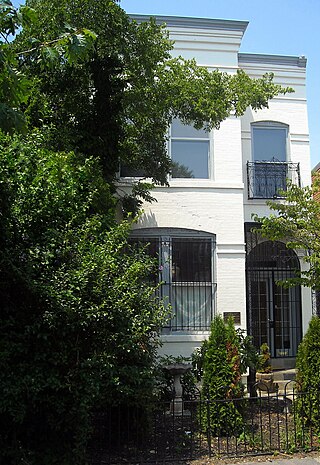
The Evans-Tibbs House is an historic house in the Shaw neighborhood of Washington, D.C. It has been listed on the District of Columbia Inventory of Historic Sites since 1985 and it was listed on the National Register of Historic Places in 1987. It is a contributing property in the Greater U Street Historic District.

Fuller House is an historic house in the Kalorama Triangle neighborhood of Washington, D.C. It has been listed on the District of Columbia Inventory of Historic Sites since 1985 and it was listed on the National Register of Historic Places in 1985. The house was designed by architect Thomas J.D. Fuller and completed in 1893. It is a contributing property in the Kalorama Triangle Historic District.

Ingleside is a historic house in the Mount Pleasant neighborhood of Washington, D.C. The house was designed by architect Thomas U. Walter and completed around 1850. From 1896 to 1904, it was owned by Thomas C. Noyes, an editor, part-owner, and publisher of the Washington Evening Star and owner of the Washington Senators baseball team.

The Edward Simon Lewis House is an historic house, located at 456 N Street, Southwest, Washington, D.C. in the Southwest Waterfront neighborhood.
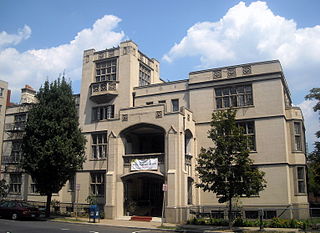
Meridian Hall is an historic house in the Columbia Heights neighborhood of Washington, D.C. It has been listed on the District of Columbia Inventory of Historic Sites since 1990 and it was listed on the National Register of Historic Places in 1991 as the Mansion at 2401 15th Street, NW. Today, it is headquarters of the Art of Living Foundation.
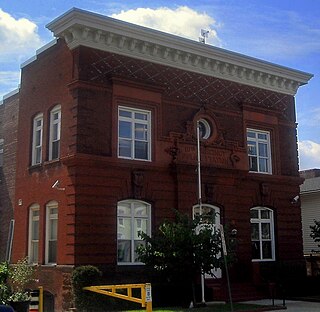
The Tenth Precinct Station House is an historic structure located in the Park View neighborhood of Washington, D.C. United States. The building was designed by the architectural firm of A.B. Mullett & Co. and was completed in 1905. It was constructed for Metropolitan Police Department.

Spencer Carriage House and Stable is an historic structure located in the Dupont Circle neighborhood of Washington, D.C.

Gen. Robert MacFeely House is a historic residence located at 2015 I St., Northwest, Washington, D.C. The house was built around 1860 and was altered between 1881 and 1929. It has been listed on the District of Columbia Inventory of Historic Sites since 1983 and it was listed on the National Register of Historic Places in 1989. The building now serves the Arts Club of Washington.

Engine Company No. 19 is a historic Engine house in Southeast Washington, D.C.'s Randle Highlands neighborhood. It was listed on the District of Columbia Inventory of Historic Sites in 2009 and it was listed on the National Register of Historic Places in 2010.
The District of Columbia Inventory of Historic Sites is a register of historic places in Washington, D.C. that are designated by the District of Columbia Historic Preservation Review Board (HPRB), a component of the District of Columbia Government.

